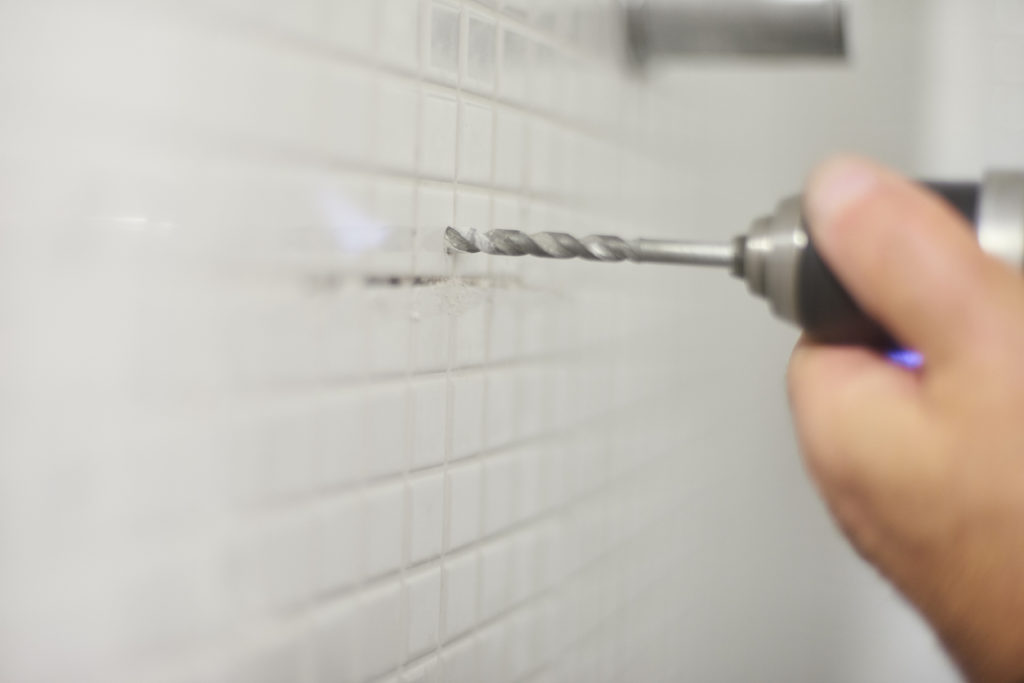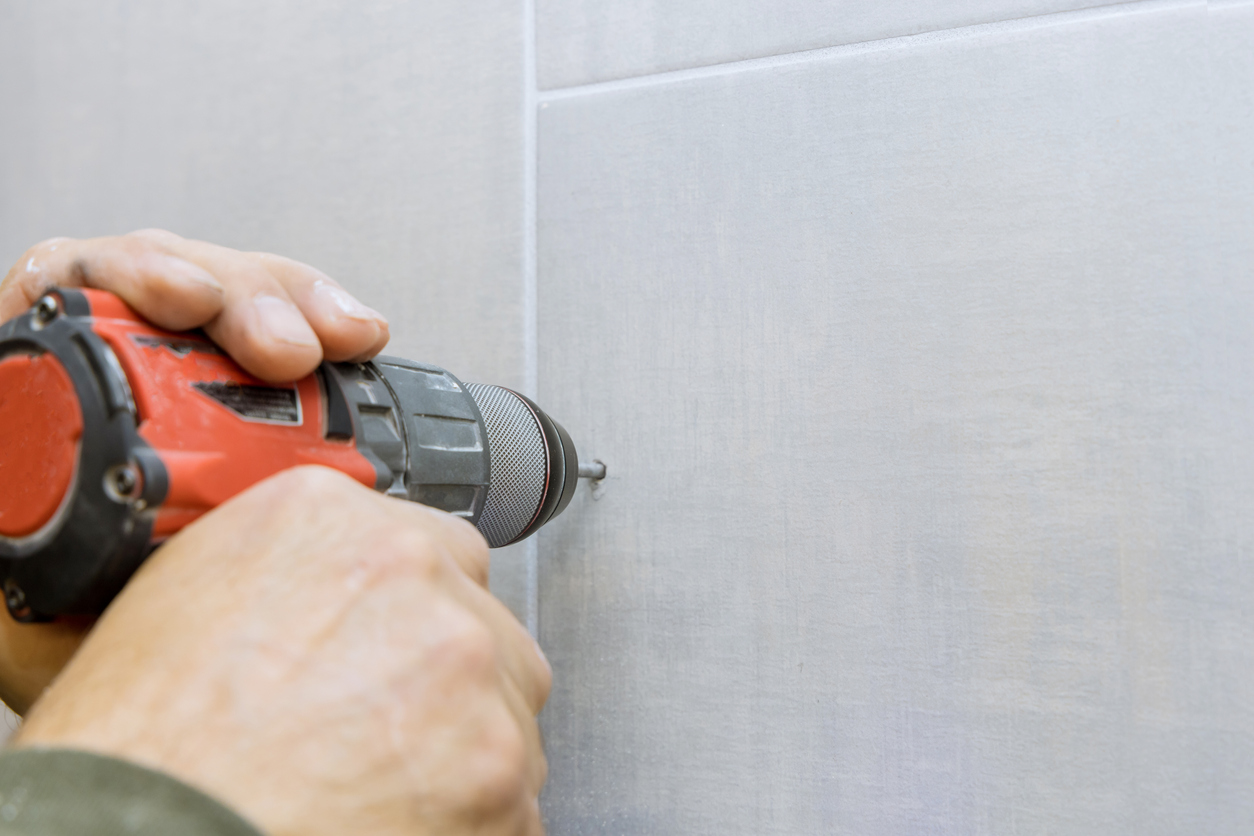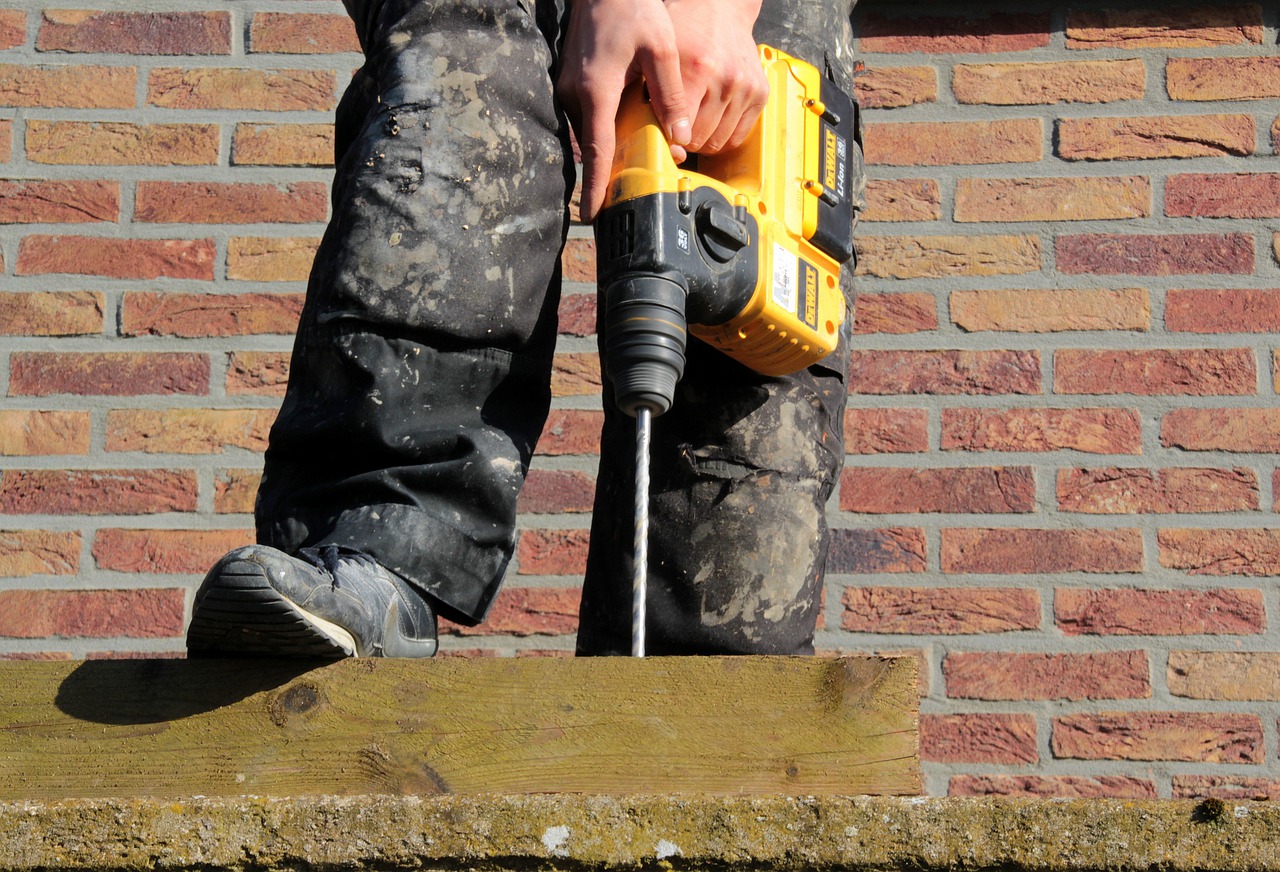Drilling through the dense surface of a tile can be challenging even if you have plenty of experience drilling into other materials. The glazed veneer may be thin, but it’s slippery and harder than you might expect. If you apply too much pressure, the brittle material can crack and leave you with a tragic mess.
If you plan on mounting a towel rack or toothbrush holder, for instance, you’ll generally need to use wall anchors. That means that drilling into the tile is just the beginning. Once you get through the glaze, you’ll need to tackle the brick, wood or concrete wall behind it without damaging it or expanding the hole too much.
This guide will show you how to use a simple strip of tape to make drilling through tile safer, easier and more precise.
Common Types of Tiles
Some types of tiles are harder than others and require different techniques or tools. If you can find out beforehand what kind of tile you’ll be drilling into, you’ll be better prepared to bring the best drill bit and other necessary materials for the job.
The four most common tile types found in the majority of households are:
- Glazed ceramic tiles – These are found in most older homes. They’re easier to drill into than the other types since the glaze is just a thin glass layer.
- Glass tiles – These are generally used only as an accent. They’re commonly found in newer homes, since they only became popular in the last decade or so.
- Porcelain tiles – Although these look almost like typical ceramic tiles, they’re much denser due to their high silica content as well as the extreme heat used to bake the soft clay into hard porcelain. Drilling into a porcelain tile will need an even harder drill bit than drilling into ceramic or glass. You may also need a bit more preparation before starting and a bit more elbow grease during the job.
- Stone tiles – These are rare, but if you have to drill into one, you’ll need the same specialized drill bit used for porcelain tiles.
Here are a few ways to identify whether your tiles are porcelain or ceramic. Porcelain tiles are generally smoother and heavier than ceramic tiles. They also absorb more water through the sides and base. If you can find a way to check the edge of one of your tiles, look at the coloration. Porcelain tiles tend to keep the same color throughout the whole body, whereas most ceramic tiles have a multi-colored cross section.
What Kind of Drill Bit Should I Use?
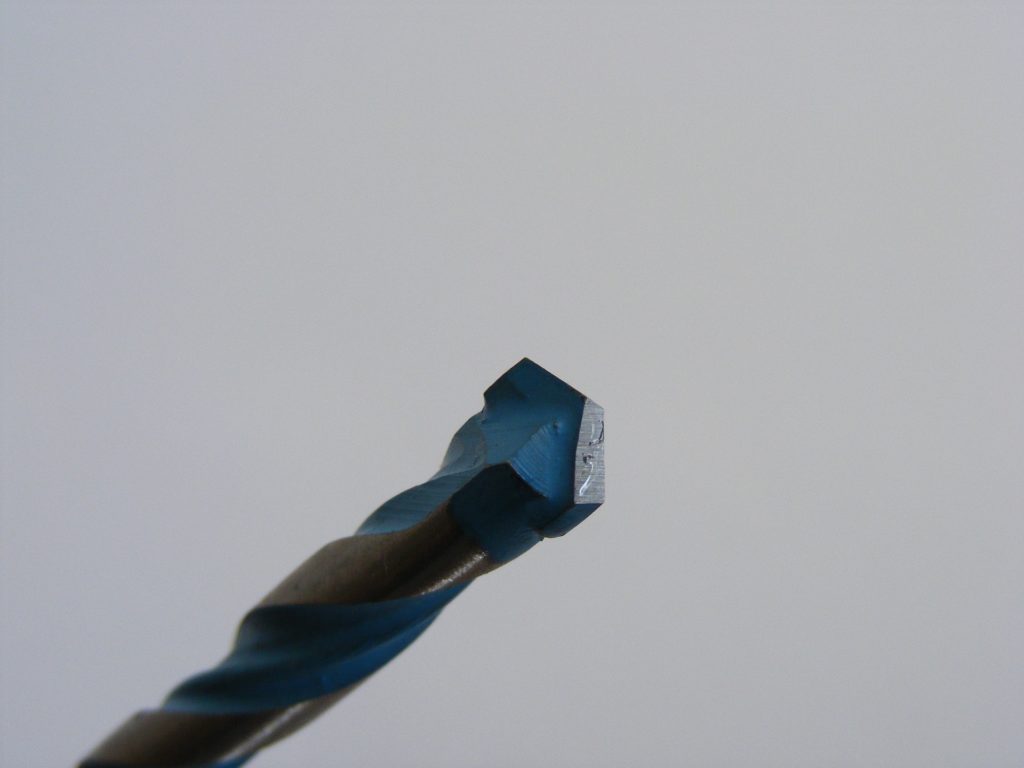
Whatever type of tile you have, don’t use an old or dull bit to drill into it. Worn drill bits have a much greater chance of cracking a tile’s surface. Their rotation might be slightly uneven, and you may have to exert more force to drill down than the tile can stand.
Even brand-new standard drill bits have a hard time cutting through glazed surfaces. Regular twist bits designed for metal or wood won’t work well on the fire-hardened glass covering most tiles. You’ll generally need either a masonry drill bit with a carbide tip or a diamond-tipped bit.
How to Find the Right Dremel Drill Bits and Drill Through Ceramic Tile
How to Sharpen Drill Bits to Perfection With Your Dremel Sharpening Kit
You can use a carbide-tipped drill bit for tile made from ceramic or glass. Carbide is a stronger material than glass and has no problem grinding through most glazes.
If you need to drill through porcelain or stone, however, carbide won’t do the trick. The best drill bit for porcelain tile is the extremely durable diamond-tipped bit. Although diamond-tipped drill bits cost about twice as much as carbide-tipped bits, they won’t burn out or wear down as quickly, and with the right technique, they can get through the hardest materials on earth.
If you’re not sure what kind of material your tile is made from, your best bet is to opt for the more expensive diamond-tipped bit. The higher initial cost is a better long-term investment, especially if you regularly need to cut through hard surfaces.
Tools and Materials to Prepare Beforehand
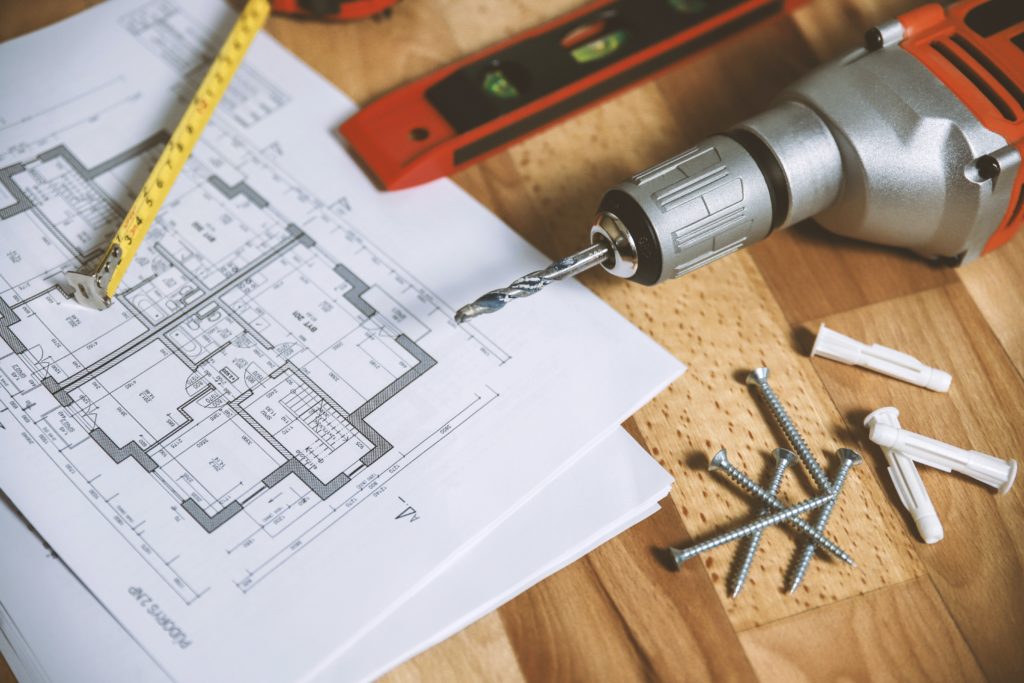
Besides your drill, screws, wall anchors and the right drill bit for your type of tile, here are a few more tools and materials you might want to have on hand when drilling through tile:
- Painter’s tape or masking tape – Give your bit extra traction when drilling on slippery surfaces.
No products found.
- Measuring tape – Make sure you drill your holes in the right location and with the right spacing.
- 2 Pack Soft Fashion Measuring Tape Set. Double sided, 60 inch / 150 cm, portable,durable tape measure. Small and light pocket size measuring tape.
- Easy to Read and Accurate Measurements. The tape measure has accurate, large and clear markings in both inches and centimeters, easy and convenient to read. Wide Application on Home Office School Supplies: Cloth tape measure; body tape measure, sewing tape measure, measuring tape for body, waist tape measure, tailor tape measure. Great measuring tape for body, sewing, tailoring, weight loss, ordering clothes online, waist measurement or measuring any curved surface.
- NOTE: The black tape measure is retractable. There is a retract button in the center, just press on the button when pulling the tape out or retracting the tape back into it, or there will be loud noise.
- Package includes one soft fashion pink tape measure and one retractable black tape measure. Perfect multipurpose measuring tape for body fabric sewing tailor cloth knitting craft measurements. Great gift idea for family friends coworkers seamstress. (Retractable Black Measuring Tape, Size 2 x 2 x 0.5 inches, weight 0.7oz, portable and easy to carry or put into your bag.)
- Felt-tip pen, marker or grease pencil – Mark your measurements with something that can write on both tile and tape.
- Create legible marks on metal, glass, china and a variety of other porous and non-porous surfaces
- No sharpening required – peel the paper wrapping back for more marker
- Fade- and moisture resistant wax-pencil formula creates easy-to-see marks
- Erases easily and cleanly with a damp cloth
- Includes: 12 Black china markers
- Level – If you’re drilling multiple holes, a level can help you make sure they’re on the same plane.
- Torpedo Level Magnetic: Featuring a magnetic base, Firecore spirit level attaches securely to metal surfaces for a variety of needs.
- Shockproof Rubber End Cups: Rubber end caps are shock absorbing to alleviate strain against the body of the product if dropped, and help protect the bubble vial and frame.
- 3 Different Vials: With 90°vertical bubble, 0° horizontal bubble and 45° bubble, Firecore small torpedo level tool provides maximum readability for the measurement.
- Lightweight Yet Durable: The high-impact ABS plastic housing is durable and lightweight. The hanging holes also allow the user to hang the leveler so that it will not be harmed when not in use.
- Wide Application: Firecore 9 inch torpedo level is designed for for a variety of projects, such as bricklaying, carpentry, wood construction, concrete/masonry construction, window fitting, road construction, gardening and landscaping.
- Towel – Protect the surfaces underneath your work space from messy particle splatter and provide some padding in case you accidentally drop something heavy.
- 10x GRIP-ROOT WEAVE - TRAP MORE, WORK LESS: Ultra-absorbent microfiber towels for car Grip Root weave works like PLANT ROOT FOLLICLES, sucking up & LOCKING AWAY 8x to 10x its weight in liquid, particulates, moisture, grime and dirt in far LESS TIME than traditional ‘Heavy Duty’ Cleaning Rags. Each towel features a 2.5mm thick design, providing enhanced durability and better grip during use.
- WON’T LINT, SCRATCH, PILL, SWIRL, SHED, or BLEED like thin, cheaply made microfiber towels for cars. RAPID DRY release layers make these the ideal microfiber towels for cars, creating that spectacular, SWIRL-FREE MIRROR SHINE with our cleaning rags. With a solid 2.5mm thickness, these towels are built to prevent damage while ensuring optimal performance.
- LASTS 1200+ WASHES - That’s 3.27 YEARS worth of use in this 12-pack of COMMERCIAL GRADE 300 GSM microfiber towels. The 2.5mm thickness and OVERLOCK BRAIDED STITCHING makes the ideal SUSTAINABLE SOLUTION for cleaning every SURFACE, crack, and CREVICE in your home, garage, or office.
- SOAK IT UP FASTER - 4X’s MORE ABSORBENT than COTTON cloths, these are the microfiber cleaning cloth for cars to get if you want an ALL PURPOSE cleaning towel, crafted with 2.5mm thickness to scoop up your messes, oils, and liquids FASTER than a SPONGE
- UNRIVALED POWER - TEST THIS GRIP-ROOT technology risk-free for 30 full days. With a 2.5mm thick design, it LOCKS AWAY dirt, dust, grime, spills, and messes better than any other high-performance cleaning rags you’ve tried.
- Vacuum – A dust extraction vacuum will help you clean up stray tile particles after you finish.
- ❤【LARGER CAPACITY】Stanley SL18116P Wet / Dry Vacuum has a larger capacity over 22 L, makes small clean-up jobs a breeze for you as you don’t have to empty the bucket frequently any more.Runtime: 300.0 hours
- ❤【VERSATILE & POWERFUL】Thanks to the 4 peak HP motor, this vac offers powerful enough suction needed to almost any cleanup jobs in vehicle, jobsite, workshop, garage, basement, van, house, etc
- ❤【3 in 1 FUNCTION】With this versatile vac you can vacuum both wet liquid spills and dry debris, dust, saw, dirt or blow leaves away(use blower port), just organize the hose and power cord on top handle and side wraps after using, conveniently
- ❤【FARTHER CLEANUP】With over 16 ft of cleaning reach(6 ft hose, 10 ft power cord and 3 pieces of extension wands) it’s easy to do a farther cleanup for you without unplugging the unit, while it has four swivel casters for convenient and easy manoeuvrability
- ❤【WHAT YOU GET】Stanley SL18116P Wet / Dry Vac x 1, 1-1/4"x6’ super flexible hose x 1,extension wands x 3, gulper nozzle, floor nozzle x 1,crevice nozzle x 1,foam filter x 1, dust bag x 1, reusable dry filter x 1, 12-Month Warranty
- Hammer – When drilling larger holes, you’ll need a hammer for the drill-and-tap method we explain below.
- Mr. Pen 8oz Hammer, Made from High Density Carbon Steel, Anti-rust and Durable
- Ergonomic Non-Slip Soft handle
- Perfect Size, Easy to Carry, convenient for work
- Magnetic Nail starter and Hammer Claw to easily remove nail
- Ideal for woodworking, DIY Projects, Either at Home or Shop
- Center punch or concrete nail – You can score the tile’s surface and get your hole started easier with one of these.
No products found.
- Water or cutting oil – Keep some room temperature water or cutting oil nearby in case your drill bit starts overheating.
- Use for drilling, tapping, milling - any cut on any metal when a biodegradable cutting fluid is called for in your environment
- Highly effective for hard metals such as stainless steel. Will not stain or change the properties of even soft metals such as aluminum
- Dissipates heat rapidly and provides closer tolerances
- Yields an ultra-fine finish and promotes longer tool life
It’s also a good idea to wear safety equipment to protect your eyes, ears, lungs and hands:
- Eye protection – Keep tile dust from getting in your eyes by wearing sealed safety goggles or at least a pair of work glasses or a face shield.
- STRONG, DURABLE DESIGN — Thanks to the tough, polycarbonate wraparound construction, these anti fog safety glasses for men and women offer superior protection from both direct and peripheral threats. They are the ANSI Z87.1 safety glasses women and men trust.
- LIGHT, COMFORTABLE AND ADJUSTABLE — These clear eye protection glasses have extendable arms and an adjustable soft nose pad so you always get the perfect fit. They're also armed with non-slip rubber grips so your mens safety glasses stays on.
- ULTRASHIELD LENS TECHNOLOGY — Compared to most clear protective glasses, the premium coating on our safety glasses anti fog is 5x more fog resistant and 2x more scratch resistant. No fog, no scratch, and zero optical distortion.
- 100% UV PROTECTION — The clear lenses of these protective glasses block 100% UV radiation. They make great lab safety glasses, shooting glasses, and work glasses for men. They’re great as construction glasses, medical safety glasses, antifog safety glasses and more.
- BUILT TO LAST — Your safety glasses for women and men come with a lifetime warranty. If there’s an issue, we’ll replace your saftey glasses or refund you because we stand behind the high quality of every product and we’ve got your back, no matter what.
- Ear protection – Diamond cutting through porcelain can get noisy, so bring some earmuffs or earplugs to protect your ears.
- ULTRA COMFORTABLE - Made with super low-pressure, slow release, Comfy Cush Comfort Foam. Their user preferred color is as easy on your eyes as they are on your ears
- ULTRA NOISE BLOCKERS – With a Noise Reduction Rating (NRR) of 33 decibels, these versatile, noise blocking earplugs are great for sleeping, studying, work, travel, concerts, relaxation, motorcycling, loud events, etc
- #1 BRAND FOR SNORING, SLEEPING AND TO PROTECT HEARING - Mack’s is the #1 doctor recommended brand of foam earplugs to protect hearing and to get a good night’s sleep when sleeping with a snoring spouse
- #1 BRAND USED BY DOCTORS - Mack’s is the #1 brand of foam earplugs personally used by doctors. Trust the brand that doctors trust
- MADE IN THE USA – Proudly made in the USA with safe, high performance, noise reducing foam. Satisfaction guaranteed. The plastic jar is safety-sealed and features a convenient flip-open top for easy dispensing
- Lung protection – Breathe as little tile dust as possible by wearing a dust mask or a respirator when glass, porcelain or stone particles are flying.
- ✔Notice that this is Non-medical KN95 face masks.Breathable KN95 face masks are made of two layers of non-woven cloth, two layers of melt-blown fabric, one layer of hot air cotton.
- ✔The 3D structure is designed according to the human face shape to ensure the tightness and safety. With soft elastic stretchable ear loop,which helps eliminate pressure on the ears for comfortable experience. Adjustable nose clip can help the mask perfectly attach onto your face.The four sides join tightly to the face; Hence, the protective mask KN95 avoids unfiltered air directly entering into.
- ✔Application:Keep your mouth, nose and chin covered and protected when you go to crowded public places and enclosed public spaces. This KN95 masks are good for transport drivers, taxi drivers, media reporters, couriers, etc.Which can be applied in home, office, school, park, playground, indoors, outdoors and more congested and busy public places.
- ✔A lightweight and foldable design makes these face masks easy to fold into your bag, easy to incorporate and save space. Our breathable face mask KN95 can greatly improve the permeability, and to make wearing and exhaling more comfortable.They are a great choice to take along when you will be among people and want to stay safe.
- Disclaimer: “This KN95 mask is NOT an N95 mask. For more information about KN95 masks please see the following before you purchase: amazon.com/AboutKN95s”
- Hand protection – Protect your small joints and digits with some sturdy work gloves when using spinning or striking tools.
- Superior Material: Our 6 mil nitrile gloves are made from high-quality nitrile, providing a more durable and comfortable alternative to latex gloves and vinyl gloves, perfect for mechanics, cleaners, and food prep professionals.
- Advanced Design: These gloves are heavy-duty, fully textured, and powder-free for optimal grip and sensitivity. They are latex-free, thus suitable for those with latex allergies, and designed to be disposable for quick clean-up.
- Versatile Applications: Ideal for a variety of tasks including cleaning, food handling, and tattooing. They can also serve as mechanic gloves, barber gloves, or cooking gloves disposable food safe, ensuring safety and hygiene.
- Sizes and Quantity: Our nitrile gloves are available in small, medium, large and xl sizes, catering to different hand sizes. They come in bulk, making them suitable for commercial use, such as in barbershops and restaurants.
- Food-Safe and Non-Sterile: These gloves are food-safe, perfect for cooking and food prep. They are non-sterile, making them ideal for non-medical use. They are also black, allowing for a clean and professional look.
Prepare Your Wall
Cutting into tile is impossible to undo, so make sure you get your measurements perfect before spinning up the drill. If you’re mounting hardware that requires two or more holes, like a towel rack, use your level to ensure that all the holes line up.
Much like wood tends to split if you hammer in a nail too close to one side, tiles have a greater chance of cracking if you drill near any of the edges. Try to place your holes as close to the centers of the tiles as possible.
Tile surfaces are slippery, and it can be hard to keep your drill bit in place. The slightest hand tremor or concentration lapse could make you accidentally scratch the tile or even crack it in two. You can prevent this with a simple strip of tape.
Fixing a strip of tape over the spot on the tile where you plan to drill will give you a number of advantages. It’s easier to mark your hole’s location accurately on tape than directly on the tile where it can rub off with the slightest contact. More importantly, starting your hole on a piece of tape placed over the tile will give your drill bit a little extra traction that will keep it from moving around and missing the spot or marring the tile’s surface with ugly scratches.
Painter’s tape is a bit easier to clean up than most other kinds of tape because it won’t leave any sticky residue on the tile that you have to scrape off later. If you don’t have painter’s tape, you can use masking tape.
Once you’ve measured the general location where your hole needs to go, finish preparing your wall by cutting two strips of tape about as long as your thumb. Place them over your drill site in an X shape. Measure the exact location once again, and use your felt-tip pen to mark a dot on the tape right where you need to drill.
How to Drill a Hole in Tile
Tiles are made to survive a lot of wear and tear, so drilling into them can be challenging. You’ll need plenty of patience and a steady hand as you work your way through the process. Don’t be tempted to rush, or you could permanently scar your surface.
- If you’re drilling into a porcelain tile, get your hole started by placing a concrete nail or center punch on the mark on your tape. Tap it lightly with your hammer just enough to take some of the glaze off the tile to make it easier for the drill bit to slide in.
- Line up your carbide or diamond-tipped drill bit with your mark. Start drilling gently and slowly to make sure your hole ends up exactly where you need it. Fast speeds create a lot of friction all at once, which can dull a carbide bit or even end up cracking the tile. You want constant gentle pressure for at least the first two or three seconds as your drill bit works its way through the glass glaze.
- Once your drill bit has made a shallow groove in the tile, it will be better able to cling to the tile material. At this point, you can increase your pressure and drill speed a little although you still shouldn’t go full blast.
- Carbide-tipped drill bits are prone to overheating, which can wear them out quickly. Try to keep your carbide bit running cool all the time. If you feel it start to overheat, splash some water onto it or dip the carbide tip into your container of cutting oil. Never let the water or oil get on or around the motorized part of your drill. You may need to cool down a carbide bit after every 15 to 30 seconds of drilling. Make sure you wipe any water or oil residue off the bit before you resume drilling.
- Diamond-tipped bits are a lot less high maintenance. They won’t damage as easily with heat and friction. If you feel your diamond bit getting hot, just give it a few seconds to cool down before you continue.
- Once the drill bit cuts all the way through the tile, you’ll feel the resistance change. That’s how you know it’s time to replace your diamond or carbide bit with a standard bit more suitable to whatever material lies behind the tile. If you keep using a heavy-duty bit on a soft wall, you can rip open the hole more than you need to, which can result in loose wall anchors and a flimsy hardware installation.
- Unless your wall is made of stone or some other exceptionally hard material, use your standard twist bit and a slightly higher drill speed to extend your hole into the wall as much as necessary.
- When you feel your hole is deep enough, rip the tape off the tile, vacuum up any dust residue and work the wall anchor into place so that you can mount your hardware.
Drilling a Larger Hole With the Drill-and-Tap Method
If you’re installing a plumbing stub-out or other hardware that requires a hole larger than your biggest drill bit, here’s a little geometric trick you can use if you don’t have a carbide hole saw kit.
- With your measuring tape and marker, draw a circle on the tile outlining exactly where you want the large hole to be.
- Use the above technique to drill a series of small holes close to each other around your marked outline.
- Lightly tap around the inside of the perimeter of your circle of holes with your hammer. Be patient; this can take a few minutes. Eventually, after enough gentle taps, the center of your circle of holes will break apart from the rest of the tile. The edges might be a bit rough, but you can use a decorative plate to hide them if necessary.
- The drill-and-tap method works beautifully whether you need a circular, square or rectangular hole in your tile.
